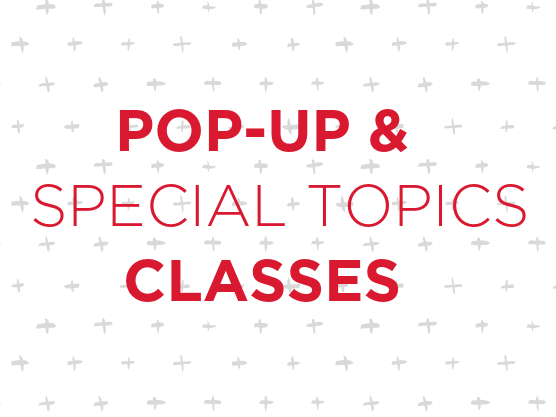
Planning your fall schedule? Check-out the pop-up classes and special topics courses offered by the College of Journalism and Mass Communications.
Special Topics Courses
Special topics are new 3-credit-hour classes offered during the course of a regular semester or 8-week mini session. There are no prerequisites for special topics courses. Learn more at journalism.unl.edu/special-topics.
Data Storytelling
JOMC 491/891.953 | online | mini session, Oct. 21 - Dec.13
Every day, more of our lives are being stored in a database somewhere. With that explosion of data, storytellers now more than ever need the skills to analyze and understand data to then produce the stories hidden in the information. In this class, we’ll use brainpower and software to look at raw data -- not summarized and already reported information -- to tell stories for a variety of audiences. We’re going to get our hands dirty with code, data, basic stats and the thinking that goes with it
Faculty: Olga Pierce
UX/UI Design
ADPR 391.002 | Thursdays, 5:30-8:20 p.m.
Web design systems expand design knowledge from paper to digital. In the world of digital and interactive media, tools change and trends come and go. Applying principles and strategy for user experience (UX) and user interface design (UI) students will create usable prototype designs. This class you will learn prototyping best practices using Sketch, apply Atomic Design Principles and understand web designs systems without any coding.
Faculty: Mollie Cox, lead user experience architect, DMSi Software
Pop-up classes
Pop-up classes are 1-credit-hour courses that give students a deep dive into new skills or knowledge. There are no prerequisites for pop-up classes. Learn more at journalism.unl.edu/pop-up.
Investigative Reporting Toolkit
JOUR 491/891.952 | Sept. 6, 4:30-8 p.m., Sept. 7, noon-5 p.m.., Sept. 8, noon-5 p.m.
This class will get students started with investigative reporting, beginning with bedrock concepts including 'outside -in' and 'documents frame of mind'. Advance through methods of uncovering information about individuals, businesses and government entities of interest. Students will also write a practice government open records request.
Faculty: Olga Pierce
Illuminating and Illustrating with Maps
JOMC 391/891.955 | Nov. 2, 3, 10 & 11; 1-5 p.m.
One of the most desirable skills on the job market for data and multimedia journalists is the ability to make maps. The class will begin with mapping basics and then introduce tools to find and show geographical patterns. Students will leave the course with templates they can reuse to make publishable static and interactive maps that are mobile and social friendly.This class is for beginners and more advanced students. Those comfortable with coding will have the opportunity to participate in an optional extra session on mapping with R.
Faculty lead: Olga Pierce
Become an After Effects Ninja
ADPR 191.951 | Sept., 1, 8 & 15; 10 - 3 p.m.
Learn the essentials of After Effects to add this awesome program to your arsenal of skills. Learn to keyframe, layer, and animate your way to the top of the resume pile.
Faculty: Colby Dolan, motion designer, Barkley
Television Writing Workshop
JOMC 391.956 | Oct. 11, 1-6 p.m.., Oct. 12, 10-3 p.m.. and Oct. 13, 10-3 p.m.
It is said to be the new golden age of television. With every channel, digital platform, and app producing original content the breadth of storytelling has been cracked wide open. This course is for the novice screenwriter who would like to learn the basics of the craft of television writing. As an industry professional, working in TV and film for over a decade, I hope to answer questions, give insight, and demystify the process.
Faculty: Michael Svobada, Hollywood television writer
60 Video Storytelling
JOMC 491/891.956 | Oct.. 1-29, 5-8 p.m., Tuesdays
In traditional video storytelling, it's easy to focus a viewer’s attention in order to further the story: Simply point the camera at the action. Framing excludes any extraneous content. In the 360 video environment, the storyteller can no longer control the frame: the viewer does. How must the story change to accommodate for this? How does a storyteller direct attention without a frame? What types of stories work, and what types do not, in a 360 environment? We will take a practical approach to answering these questions by creating short stories using 360 video.
Faculty: Alan Eno
Register for any of these courses in MyRed.